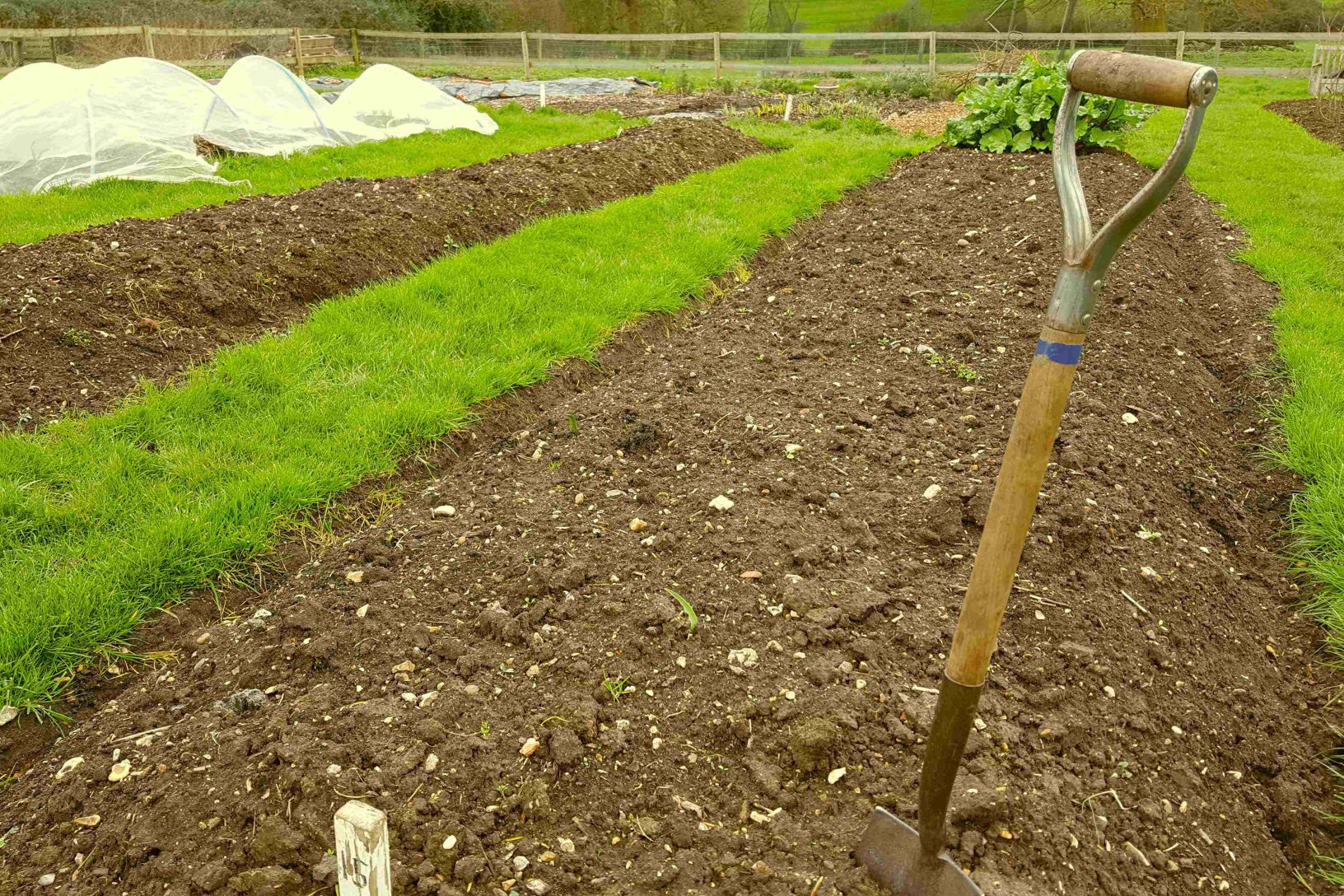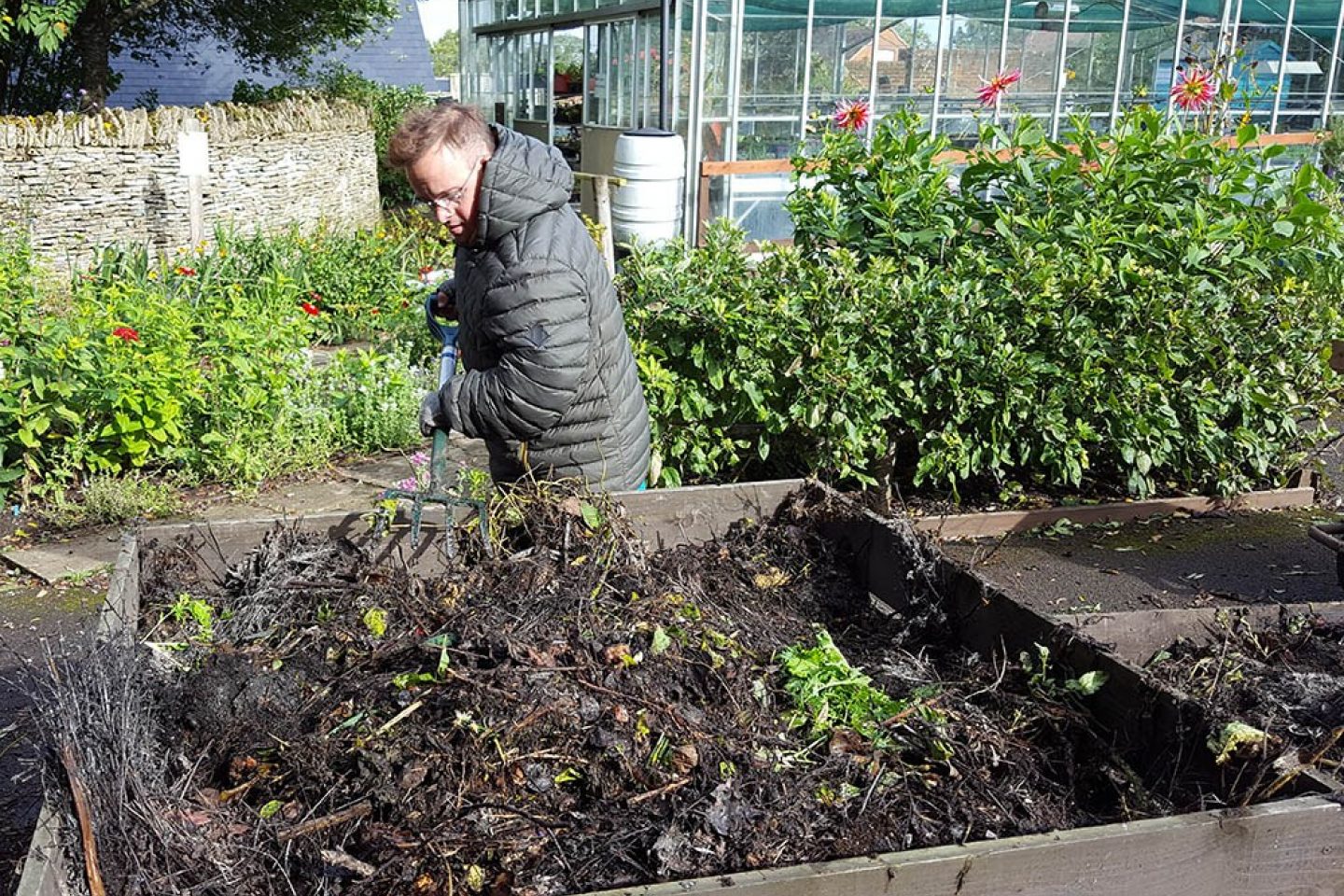Helpful information
Timing: spring, summer, autumn (manure is best added in spring or autumn)
Where to do it: Outdoors
Garden space: Large garden, small garden, balcony

Timing: spring, summer, autumn (manure is best added in spring or autumn)
Where to do it: Outdoors
Garden space: Large garden, small garden, balcony
Soil is a miraculous thing. A teaspoon full of soil contains more microorganisms than there are human beings on the planet!
For the gardener, healthy soil is one of the crucial factors determining whether plants grow successfully. Healthy soil has a structure that can absorb and maintain water and nutrients. In turn, plants can then take up these.
The health of our soil can be depleted by many things, including wind, rain and pollution through chemicals. We can help maintain and improve soil health through different methods, outlined below.
Getting to know your soil
Not all soils are the same! Your soil will likely be of one of these types:
If you are not sure what sort of soil you have, read our guide to testing your soil.
Different plants grow better in different soil types. It’s generally a good idea to work with the soil you’ve got, instead of trying to change it. But you may want to adjust how you improve soil health a little depending on your soil type.
Different soils can also have different pH levels. They could be neutral, acid, or alkaline (often the case with chalk soil). You can buy pH testing kits relatively cheaply if you would like to know.
Again, it’s generally better to work with what you’ve got and choose plants suited to your soil. But, in the case of alkaline chalky soil for example, you may need to add quite a lot of compost to help add nutrients.

One of the ways you could improve soil health (more below) is to dig extra organic material into the soil.
A growing number of people follow a ‘no dig’ method of gardening. This encourages leaving the soil undisturbed as much as possible. If you want to follow no dig, don’t choose a method that involves digging materials into the soil. Instead, add on the surface only, more closely mirroring what happens in nature.
Read more on the website of renowned No Dig gardener Charles Dowding.
If you are creating a new garden bed or border, you can still follow a no dig approach and create a bed full of healthy soil. A little more advanced planning and patience is needed, though.
Digging in the garden can be physically strenuous. You may also find no dig the easier option if you have challenges with strength, energy or mobility.
One way to improve soil health is to incorporate plenty of organic matter.
If you are creating a new bed, or have big gaps in borders, you could do this by thoroughly digging organic matter into the soil.
If you are following the no dig method (see above) or have plenty of plants you don’t want to disturb, you may be better adding a deep layer of mulch. This basically means putting a thick layer on top of the soil. Worms and other helpful organisms will do their bit naturally incorporating the mulch through the soil over time.
Mulches are also suitable for plants growing in containers.
Which material to add
There are a few main types of organic material to add to your soil.
1. Manure

When an animal manure, such as horse manure, is added to soil, it slowly releases nutrients as it breaks down. Manure also helps improve the condition and structure of the soil.
You want to add well-rotted manure, not fresh. This will mean it has less chance of having any harmful pathogens or weed seeds in the mix.
If you are digging manure into the soil, as a rough guide dig in 5kg per square metre. If using as a mulch, apply a 10cm deep layer all across your soil.
Soil types
Manure is suitable for all soil types.
Plants
There are some plants that might not do so well in manure, particularly if it’s not well rotted. Some root vegetables, particularly carrots, may be better with compost added. Avoid adding near plants that like dry or drought conditions, including succulents and cacti.
Timing
Spring is the most popular time to add manure, followed by autumn. If you have sandy soil, it’s best to add manure in late winter or early spring.
2. Compost

Compost can be a gardener’s best friend. For those who find the smell of manure unpleasant, it may be the better choice. Compost often contains a slightly more balanced source of nutrients than manure.
If you have space, you can make your own compost at home. Make sure it is well rotted down before using. If you need extra, or do not have room to compost, look for good quality multi-purpose compost from garden centres and supermarkets.
Soil types
Compost is suitable for all soil types.
Plants
Compost is generally suitable for all plants. If you have acidic soil or are growing acid-loving plants like rhododendrons and blueberries in containers, you may want to use ericaceous compost in the mix. This compost is more acidic than regular multi-purpose compost.
Timing
Spring is the most popular time to add compost, followed by autumn. When adding new plants, it’s also helpful to put a good handful of compost in the planting hole before the plant goes in.
3. Leaf Mould

If you have lots of fallen leaves in your garden in autumn, you can make your own leaf mould. After 12 to 18 months of decomposing, you should be left with a nutrient-rich organic matter. This can be dug into the soil or used as a mulch.
It is likely you would still need to combine leaf mould with another soil improver, like well-rotted manure or compost. This will help ensure your soil gets a good balance of nutrients added.
Soil types
Leaf mould is suitable for all soil types.
Plants
Leaf mould is generally suitable for all plants. Woodland and shade-loving plants, including ferns, are particularly good to use leaf mould around.
Timing
Depending when your leaf mould is ready, spring or autumn are the most popular time to add leaf mould.

Green manure is a great plant alternative to animal-based manure. It is generally used in the vegetable garden.
Green manure is something you grow yourself. It’s ideal if you have bare areas of soil in the vegetable patch, which usually happens over winter. They help protect the soil from rain at the same time.
You can buy green manure seeds from garden centres and online. Plant these across bare areas of soil, following the instructions on the seed packet. When you are ready to grow new crops in this space, first dig the green manure crops into the soil. This should ideally be done several weeks before planting.
Digging the crops into the soil helps improve its structure and fertility by adding valuable nitrogen.

As your plants grow, many gardeners may choose to give them a feed.
Plant feeds or fertilisers are generally more about improving the growth of the plant than improving the health of soil. In fact, it’s important to be careful not to overuse feed or fertilisers. Too much can have a negative impact on soil health.
A good idea is to create your own natural plant feed. If you have comfrey, dandelions or nettles these are particularly good to use for this.
Pesticides are sometimes used in gardens to manage pests and diseases. It’s important to be aware of the negative impact these can have, including on soil health. They can reduce the beneficial microorganisms in the soil, harm earthworms and other insects and create long-term soil contamination.
Where possible, it’s always best to try natural, non-chemical solutions. Companion planting, for example, can reduce some pests without harming the health of your soil or creatures in your garden.